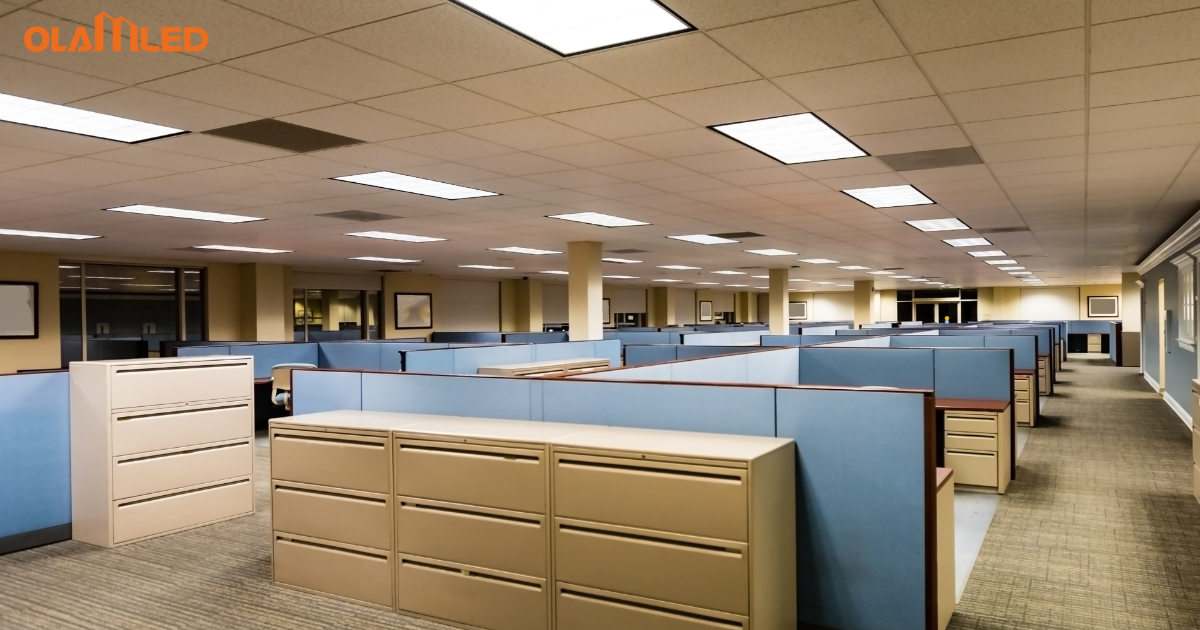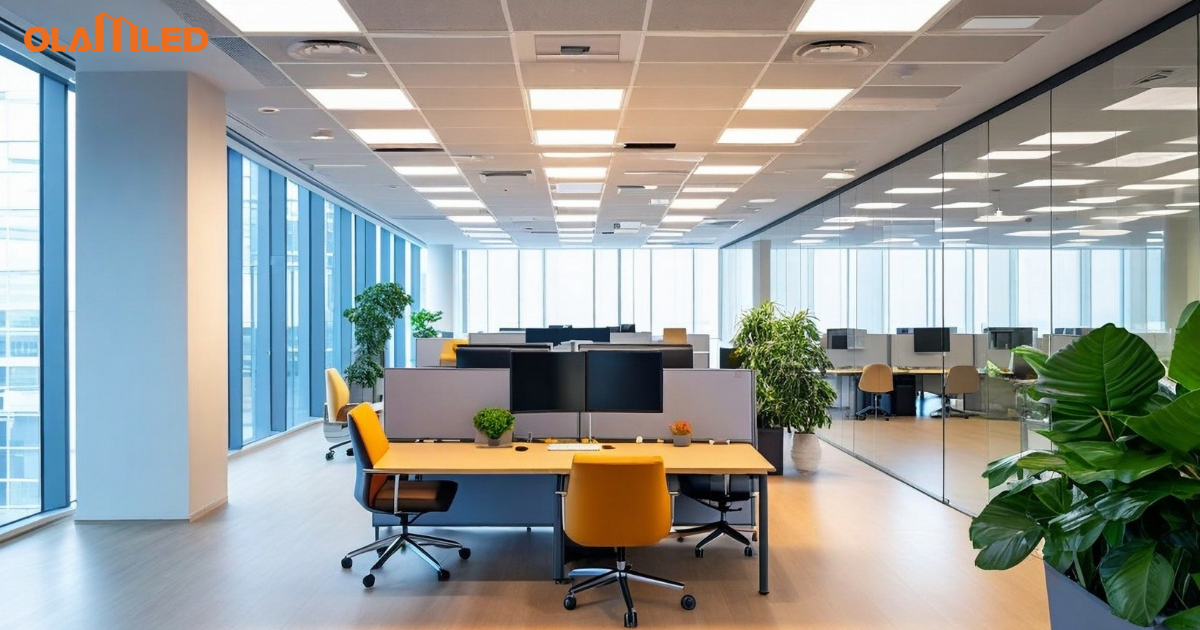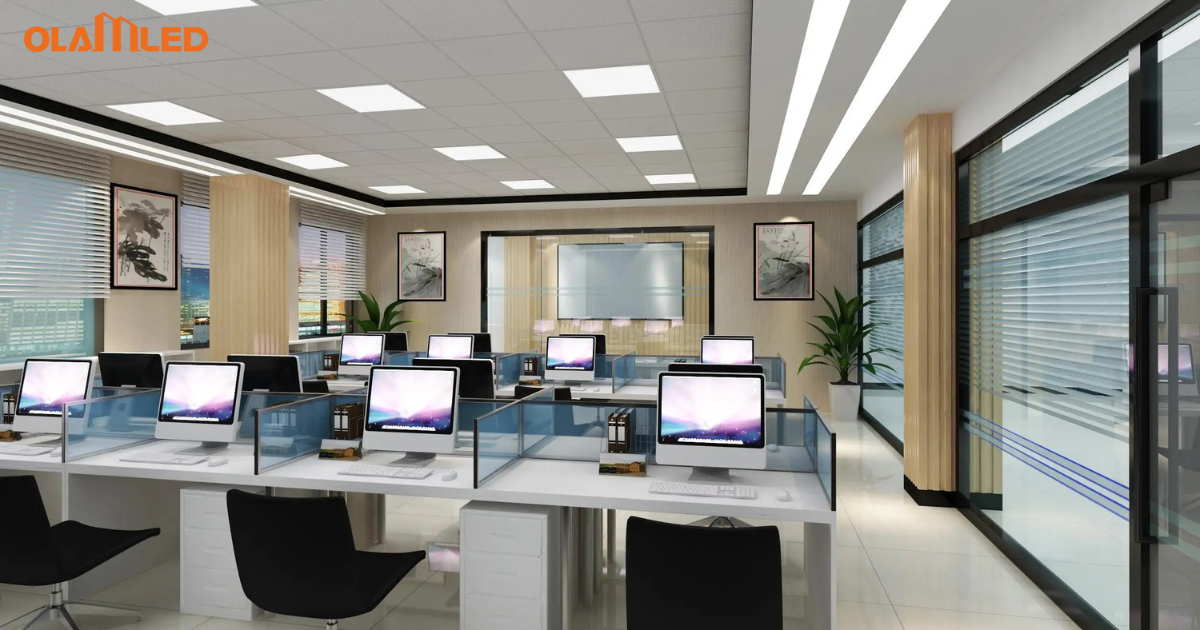Linear lighting has become a modern design trend, especially in environments that prioritize sleek aesthetics and functional lighting. This lighting solution offers continuous bands of light, providing even illumination over long spaces, unlike point-based lights such as downlights and spotlights. The recent rise of energy-efficient LED technology has contributed significantly to the widespread use of this solution in various applications. In this article, we will explore the nature of linear lighting, its components, and the many benefits it provides to residential and commercial spaces.
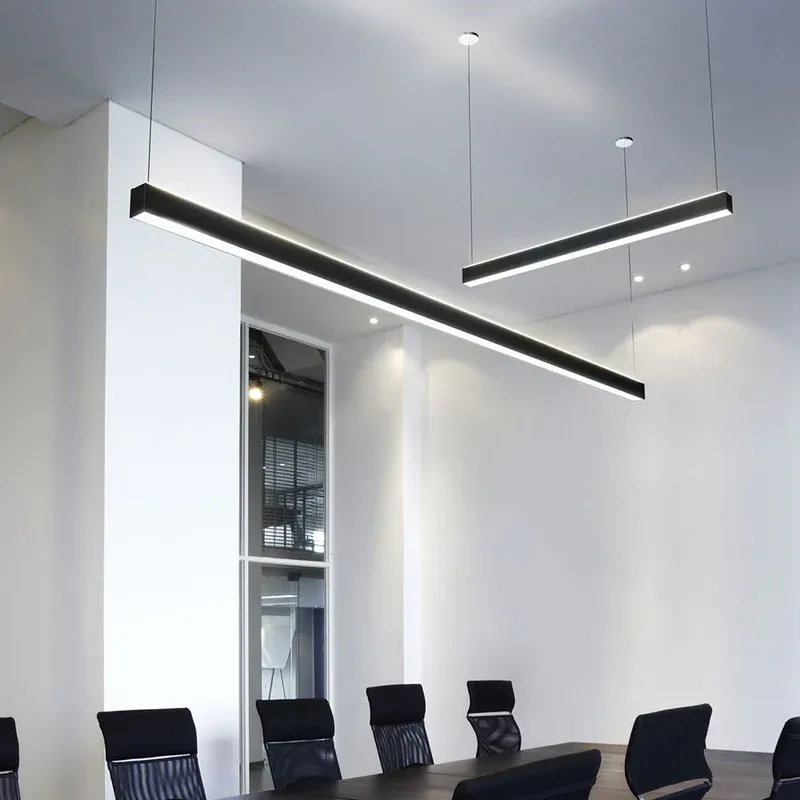
What is Linear Lighting?
Linear lighting refers to fixtures designed to produce a continuous band of light. These fixtures are typically installed in ceilings, walls, or floors, allowing light to distribute evenly across large surfaces. While traditional lighting sources emit light from a point, linear lighting provides consistent illumination, which makes it ideal for spaces requiring uniform light coverage.
The light output from linear systems is often uninterrupted, which can dramatically improve visibility in a room. This characteristic is highly sought after in areas that require high levels of focus and concentration, such as offices, laboratories, or reading spaces. The use of LED technology in linear lighting has made it possible to maintain brightness while using less energy, making it an eco-friendly and cost-effective solution.
LED technology is most commonly used in these lighting systems due to its energy efficiency, longevity, and exceptional color rendering. However, other light sources, including fluorescent tubes, can also be used, though they have largely been replaced by more advanced LED fixtures. Linear lighting can be installed in several ways, including being surface-mounted, recessed, or suspended, providing flexibility for different interior layouts.
The sleek and unobtrusive appearance of these systems makes them ideal for both commercial and residential settings, offering a clean and modern aesthetic that integrates effortlessly into various design schemes. Whether you’re designing a sophisticated office environment, a contemporary home, or a stylish retail space, linear lighting can seamlessly complement any space.
Key Components of a Linear Lighting System
To understand the functionality of linear lighting, it’s essential to examine the core components:
- Light Source: Most linear lights use LED strips because of their low energy consumption, long lifespan, and consistent light output. LED lights also have high color rendering capabilities, ensuring that they produce a natural and vibrant appearance.
- Driver: The driver is responsible for regulating the power supply to the light source. It ensures that the system operates at optimal levels and helps prevent issues like flickering and voltage fluctuations. Dimmable drivers are available, allowing users to adjust the light intensity according to their needs.
- Housing: The housing protects the light source and driver from external damage, such as dust, moisture, or impact. It is typically made from durable materials like aluminum or high-quality plastic. The housing also serves to dissipate heat generated by the light source, ensuring the longevity and safety of the fixture.
- Mounting System: Linear lights can be mounted in various ways, including surface-mounted, recessed, or suspended, providing versatility to suit the desired design and functional needs. The mounting system must be robust enough to ensure the fixture stays securely in place, whether it’s installed on the ceiling or integrated into the structure of a building.
Together, these components work to provide an efficient, long-lasting, and customizable lighting solution for any space. The combination of these elements ensures that linear lighting is adaptable, energy-efficient, and suitable for a wide range of environments.
What Are the Benefits of Linear Lighting?
Linear lighting offers numerous advantages, making it a popular choice in both residential and commercial lighting solutions. Here are some of the primary benefits:
1. Energy Efficiency and Cost Savings
One of the main benefits of linear lighting is its energy efficiency. LED-based linear lights use significantly less energy than traditional incandescent bulbs or older fluorescent lights, while still providing the same or better brightness. On average, LED lighting systems can save up to 80% in energy costs compared to traditional incandescent lighting, making them an excellent investment for long-term savings.
Additionally, linear LED lights have a significantly longer lifespan, usually between 25,000 to 50,000 hours, reducing the need for frequent replacements and lowering maintenance costs. This is particularly advantageous in commercial spaces, such as offices, warehouses, and retail stores, where the lights are often left on for long hours.
The upfront cost of purchasing linear LED fixtures may be higher than traditional lighting options, but the return on investment (ROI) is substantial. Reduced energy consumption and minimized maintenance expenses result in significant savings over time. Moreover, LED lights are highly durable, with many models being resistant to vibrations, impacts, and temperature fluctuations, making them well-suited for environments like factories, garages, and outdoor areas.
By reducing energy consumption and minimizing maintenance needs, linear lighting is a highly cost-effective solution, especially when deployed in spaces that require consistent illumination.
2. Design Flexibility and Aesthetic Appeal
Linear lighting offers incredible design flexibility, which is one of the key reasons it has become so popular in interior design. Whether for a contemporary home or a corporate office, linear fixtures can be used in various configurations to match the aesthetic needs of the space.
These lights can be installed in multiple ways:
- Surface-mounted lights are installed directly on the surface, providing a more visible feature in the space.
- Recessed lighting is installed within ceilings or walls, offering a streamlined and minimalist appearance. This style is ideal for creating a clean, modern look where the light fixture is not visible, only the light it produces.
- Suspended fixtures hang from the ceiling and can be used to create a more dramatic effect or to highlight a specific area in the room. Suspended linear lights are often used in office boardrooms or modern dining areas, providing a stylish and functional lighting solution.
The versatility in installation methods and design choices makes linear lighting an excellent option for achieving modern and clean looks in both public and private spaces. Additionally, linear lights can be combined with dimming and color temperature control features, providing further customization for creating different lighting moods and effects.
From ultra-modern office designs to sophisticated home interiors, linear lighting can fit seamlessly into any space, providing both illumination and aesthetic enhancement.
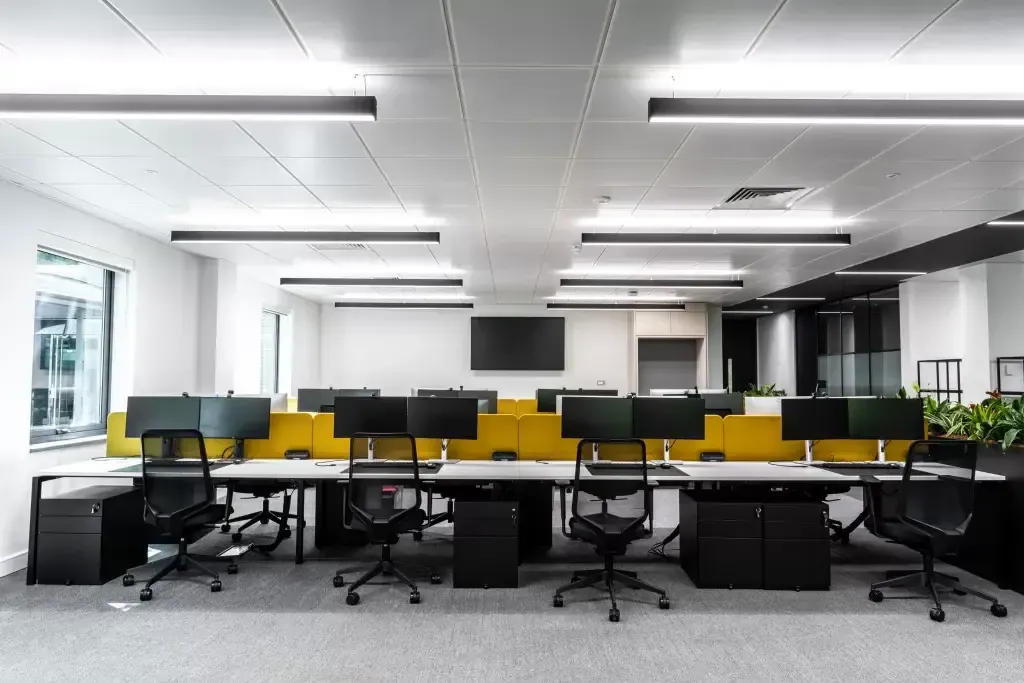
3. Versatile Applications Across Various Spaces
Linear lighting is extremely versatile and can be applied in a variety of settings. Some of the most common applications include:
- Offices: Linear lighting is widely used in office spaces to provide uniform light that minimizes glare and shadows. It can be integrated into workstations, corridors, meeting rooms, and reception areas to enhance the professional atmosphere. In offices, lighting needs to be functional yet unobtrusive, and linear fixtures excel at meeting these requirements.
- Retail: For retail spaces, linear lights can be used to highlight product displays and ensure consistent illumination across the sales floor. Their flexibility allows them to illuminate shelves, counters, and showcases with ease, creating an inviting shopping environment. Their sleek and modern look aligns perfectly with contemporary retail environments.
- Residential Areas: In homes, linear lights provide effective illumination for kitchens, bathrooms, hallways, and living rooms. Recessed lights are particularly popular for creating a seamless lighting effect that enhances the overall interior design. Whether installed along kitchen counters or above bathroom mirrors, linear lighting brings a clean, modern touch to home interiors.
- Industrial Settings: In warehouses, factories, and large industrial spaces, linear lights offer bright and uniform illumination, ensuring safety and visibility. Their rugged build and efficiency make them well-suited for such demanding environments. Industrial settings require durable lighting that can withstand vibrations and extreme temperatures, both of which are characteristics of linear LED lighting systems.
Linear lighting is adaptable and can be customized to suit various interior styles and lighting needs. Whether you need a clean, modern look for a retail showroom or an efficient, durable lighting solution for a manufacturing plant, linear lights can meet your demands.
4. Superior Lighting Quality
Linear lighting provides high-quality light that enhances the overall visual environment. Unlike traditional point light sources, which can create uneven shadows, linear lights distribute light evenly across large surfaces, providing consistent brightness throughout the room. This makes them an excellent choice for spaces where uniform illumination is essential, such as offices, workshops, and hospitals.
In addition to providing even light, linear fixtures with high color rendering indexes (CRI) ensure that colors appear natural and vibrant. This is particularly important in spaces like art galleries, photography studios, and showrooms, where accurate color representation is critical. High-CRI linear lights also benefit environments like laboratories and hospitals, where precise color differentiation can be crucial for both safety and functionality.
Many modern linear lighting systems also come with dimmable and adjustable color temperature options, allowing users to tailor the light intensity and warmth to suit different times of day, activities, or desired atmospheres. This level of control gives users the flexibility to adapt the lighting to various situations, whether for working, relaxing, or entertaining.
5. Durability and Environmental Benefits
Linear lighting, especially LED options, is known for its durability and environmental benefits. LEDs generate less heat than traditional bulbs, reducing the risk of overheating and increasing the lifespan of the fixtures. These lights are also free from toxic materials like mercury, which can be found in some older lighting technologies, making them a safer and more sustainable option.
Moreover, linear LED lights consume less power, which reduces the overall carbon footprint of a building or space. Many modern LED systems also feature waterproof and dustproof designs, making them suitable for outdoor or high-moisture environments, such as bathrooms, kitchens, or exterior lighting applications.
By choosing linear lighting, you are not only investing in a high-quality lighting solution but also contributing to a more sustainable environment. The longevity and energy efficiency of LED systems make them a greener alternative to traditional lighting, reducing waste and promoting eco-friendly practices.
Conclusion
Linear lighting has evolved into one of the most versatile and energy-efficient lighting solutions available today. By providing even and consistent illumination, reducing energy consumption, and offering flexible installation options, linear lighting systems can enhance both the aesthetic appeal and functionality of any space. Whether you are upgrading the lighting in a retail store, improving energy efficiency in a warehouse, or creating a comfortable and modern atmosphere in a home, linear lighting offers a solution that meets a wide variety of needs.
Ready to explore more? Check out our comprehensive range of LED Linear Lights, designed to offer flexibility, durability, and energy savings, and take your lighting to the next level.
The superior energy efficiency, sleek design, and flexibility of linear lighting make it an excellent choice for modern spaces. With its long lifespan, low maintenance requirements, and customizable features, linear lighting is an investment that provides significant benefits over time. As both residential and commercial environments continue to prioritize sustainability and style, linear lighting will remain a top choice for illuminating spaces with elegance and efficiency.
